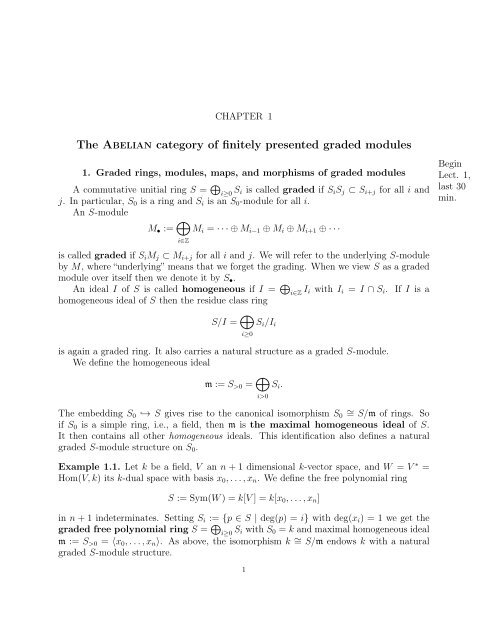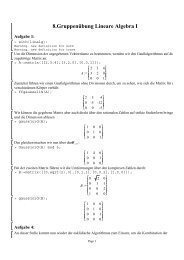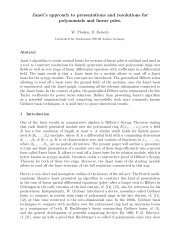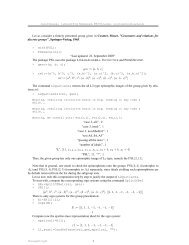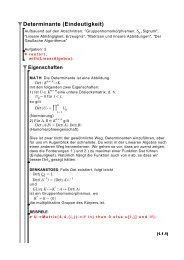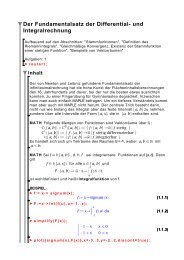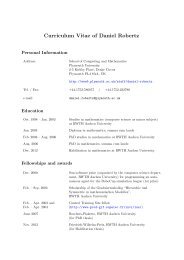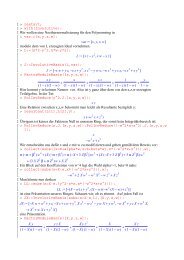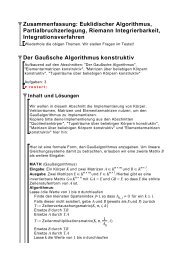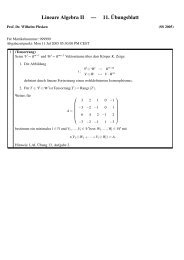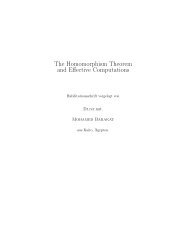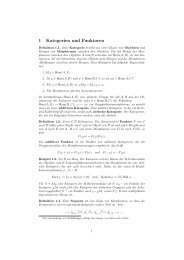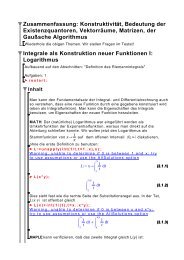Cohomology of coherent sheaves - Lehrstuhl B für Mathematik
Cohomology of coherent sheaves - Lehrstuhl B für Mathematik
Cohomology of coherent sheaves - Lehrstuhl B für Mathematik
You also want an ePaper? Increase the reach of your titles
YUMPU automatically turns print PDFs into web optimized ePapers that Google loves.
CHAPTER 1The Abelian category <strong>of</strong> finitely presented graded modules1. Graded rings, modules, maps, and morphisms <strong>of</strong> graded modulesA commutative unitial ring S = ⊕ i≥0 S i is called graded if S i S j ⊂ S i+j for all i andj. In particular, S 0 is a ring and S i is an S 0 -module for all i.An S-moduleM • := ⊕ i∈ZM i = ···⊕M i−1 ⊕M i ⊕M i+1 ⊕···BeginLect. 1,last 30min.is called graded if S i M j ⊂ M i+j for all i and j. We will refer to the underlying S-moduleby M, where “underlying” means that we forget the grading. When we view S as a gradedmodule over itself then we denote it by S • .An ideal I <strong>of</strong> S is called homogeneous if I = ⊕ i∈Z I i with I i = I ∩ S i . If I is ahomogeneous ideal <strong>of</strong> S then the residue class ringS/I = ⊕ i≥0S i /I iis again a graded ring. It also carries a natural structure as a graded S-module.We define the homogeneous idealm := S >0 = ⊕ i>0S i .The embedding S 0 ֒→ S gives rise to the canonical isomorphism S 0∼ = S/m <strong>of</strong> rings. Soif S 0 is a simple ring, i.e., a field, then m is the maximal homogeneous ideal <strong>of</strong> S.It then contains all other homogeneous ideals. This identification also defines a naturalgraded S-module structure on S 0 .Example 1.1. Let k be a field, V an n+1 dimensional k-vector space, and W = V ∗ =Hom(V,k) its k-dual space with basis x 0 ,...,x n . We define the free polynomial ringS := Sym(W) = k[V] = k[x 0 ,...,x n ]in n+1 indeterminates. Setting S i := {p ∈ S | deg(p) = i} with deg(x i ) = 1 we get thegraded free polynomial ring S = ⊕ i≥0 S i with S 0 = k and maximal homogeneous idealm := S >0 = 〈x 0 ,...,x n 〉. As above, the isomorphism k ∼ = S/m endows k with a naturalgraded S-module structure.1


